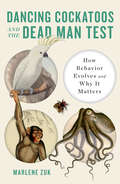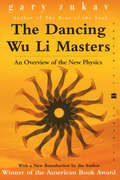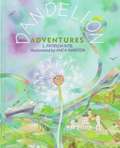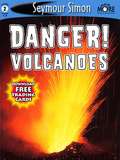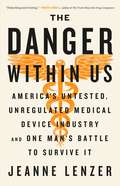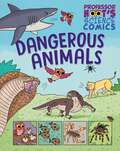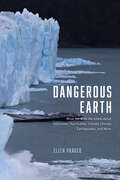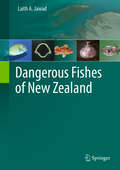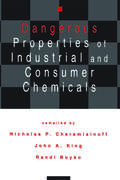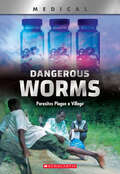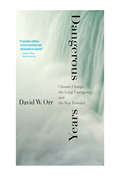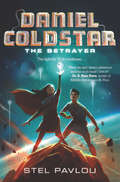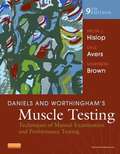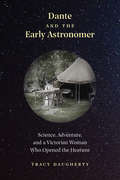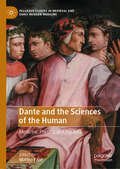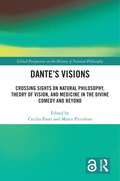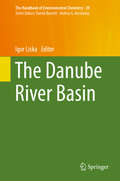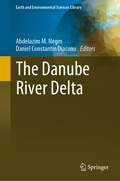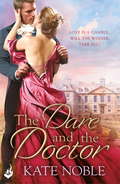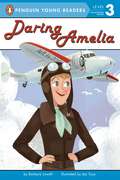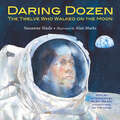- Table View
- List View
Dancing Cockatoos and the Dead Man Test: How Behavior Evolves And Why It Matters
by Marlene ZukA lively exploration of animal behavior in all its glorious complexity, whether in tiny wasps, lumbering elephants, or ourselves. For centuries, people have been returning to the same tired nature-versus-nurture debate, trying to determine what we learn and what we inherit. In Dancing Cockatoos and the Dead Man Test, biologist Marlene Zuk goes beyond the binary and instead focuses on interaction, or the way that genes and environment work together. Driving her investigation is a simple but essential question: How does behavior evolve? Drawing from a wealth of research, including her own on insects, Zuk answers this question by turning to a wide range of animals and animal behavior. There are stories of cockatoos that dance to rock music, ants that heal their injured companions, dogs that exhibit signs of obsessive-compulsive disorder, and so much more. For insights into animal intelligence, mating behavior, and an organism’s ability to fight disease, she explores the behavior of smart spiders, silent crickets, and crafty crows. In each example, she clearly demonstrates how these traits were produced by the complex and diverse interactions of genes and the environment and urges us to consider how that same process evolves behavior in us humans. Filled with delightful anecdotes and fresh insights, Dancing Cockatoos and the Dead Man Test helps us see both other animals and ourselves more clearly, demonstrating that animal behavior can be remarkably similar to human behavior, and wonderfully complicated in its own right.
The Dancing Universe: From Creation Myths to the Big Bang
by Marcelo GleiserMarcelo Gleiser refutes the notion that science and spirituality are irreconcilable. In The Dancing Universe, he traces mystical, philosophical, and scientific ideas about the cosmos through the past twenty-five centuries, from the ancient creation myths of numerous cultures to contemporary theories about an ever-expanding universe. He also explores the lives and ideas of history's greatest scientists, including Copernicus, Galileo, Kepler, Newton, and Einstein. By exploring how scientists have unlocked the secrets of gravity, matter, time, and space, Gleiser offers fresh perspective on the debate between science and faith.
The Dancing Wu Li Masters
by Gary ZukavWith its unique combination of depth, clarity, and humor that has enchanted millions, this beloved classic by bestselling author Gary Zukav opens the fascinating world of quantum physics to readers with no mathematical or technical background. "Wu Li" is the Chinese phrase for physics. It means "patterns of organic energy," but it also means "nonsense," "my way," "I clutch my ideas," and "enlightenment." These captivating ideas frame Zukav's evocative exploration of quantum mechanics and relativity theory. Delightfully easy to read, The Dancing Wu Li Masters illuminates the compelling powers at the core of all we know.
Dandelion Adventures
by L. Patricia KiteThe wind blows, and several tiny dandelion seed parachutes fly into the air. One lands in a sidewalk crack, another at the edge of a forest, while three others land in a garden, a park, and on a muddy shore. One seed lands on a ship and sails off to a foreign land. The last one lands in a schoolyard, where it takes root and matures. A child puffs on the feathery white ball and seventy little seed parachutes fly away--where might they land? In simple words and beautiful pictures, the story of how this most widespread of weeds regenerates is unfolded for young readers.
Danger! Volcanoes
by Seymour SimonSeeMore about volcanoes - from powerful explosions to flowing rivers of hot, fiery lava - in this book from award-winning science author Seymour Simon. With fascinating facts and amazing images, Simon presents an irresistible invitation to growing readers to question, explore and discover the exciting world around them, to learn the causes of volcanoes, how they build up the surface of the earth and what to do if you are near an eruption.
The Danger Within Us: America's Untested, Unregulated Medical Device Industry and One Man's Battle to Survive It
by Jeanne Lenzer"Before you get anything implanted in your body, read this book." - Shannon Brownlee, author of OvertreatedDid you know...- Medical interventions have become the third leading cause of death in America.- An estimated 10 percent of Americans are implanted with medical devices -- like pacemakers, artificial hips, cardiac stents, etc.- The overwhelming majority of high-risk implanted devices have never undergone a single clinical trial. In THE DANGER WITHIN US, award-winning journalist Jeanne Lenzer brings these horrifying statistics to life through the story of one working class man who, after his "cure" nearly kills him, ends up in a battle for justice against the medical establishment. His crusade leads Lenzer on a journey through the dark underbelly of the medical device industry, a fascinating and disturbing world that hasn't been written about before. What Lenzer exposes will shock readers: rampant corruption, elaborate cover-ups, shameless profiteering, and astonishing lack of oversight, all of which leads to dangerous devices (from artificial hips to pacemakers) going to market and into our bodies. In the vein of America's Bitter Pill and A Civil Action, THE DANGER WITHIN US is a stirring call for reform and a must-read for anyone who cares about the future of American healthcare. span
Dangerous Animals (Professor Hoot's Science Comics #3)
by Greta BirchEvery day brings a new adventure for Professor Hoot - and a new learning experience. At sunrise, Professor Hoot sets off to find out all about the most dangerous animals on the planet, and narrowly avoids becoming someone's lunch! From venomous snakes to toothy sharks and fearsome lionesses, discover the deadly bites, killer claws and surprising skills animals use to attack their prey - and warn others away.An entertaining comic strip approach to KS1 science topics, Professor Hoot's Science Comics are accessible and full of fun. Each book is an adventure and a chance for readers to learn something new, before testing their knowledge at the end of each book in Professor Hoot's quiz. Collect each adventure: Big Machines; Dangerous Animals; Dinosaurs; Robots and AI; Space; Volcanoes and Earthquakes.
Dangerous Earth: What We Wish We Knew about Volcanoes, Hurricanes, Climate Change, Earthquakes, and More
by Ellen PragerThe Earth is a beautiful and wondrous planet, but also frustratingly complex and, at times, violent: much of what has made it livable can also cause catastrophe. Volcanic eruptions create land and produce fertile, nutrient-rich soil, but they can also bury forests, fields, and entire towns under ash, mud, lava, and debris. The very forces that create and recycle Earth’s crust also spawn destructive earthquakes and tsunamis. Water and wind bring and spread life, but in hurricanes they can leave devastation in their wake. And while it is the planet’s warmth that enables life to thrive, rapidly increasing temperatures are causing sea levels to rise and weather events to become more extreme. Today, we know more than ever before about the powerful forces that can cause catastrophe, but significant questions remain. Why can’t we better predict some natural disasters? What do scientists know about them already? What do they wish they knew? In Dangerous Earth, marine scientist and science communicator Ellen Prager explores the science of investigating volcanoes, earthquakes, tsunamis, hurricanes, landslides, rip currents, and—maybe the most perilous hazard of all—climate change. Each chapter considers a specific hazard, begins with a game-changing historical event (like the 1980 eruption of Mt. St. Helens or the landfall and impacts of Hurricane Harvey), and highlights what remains unknown about these dynamic phenomena. Along the way, we hear from scientists trying to read Earth’s warning signs, pass its messages along to the rest of us, and prevent catastrophic loss. A sweeping tour of some of the most awesome forces on our planet—many tragic, yet nonetheless awe-inspiring—Dangerous Earth is an illuminating journey through the undiscovered, unresolved, and in some cases unimagined mysteries that continue to frustrate and fascinate the world’s leading scientists: the “wish-we-knews” that ignite both our curiosity and global change.
Dangerous Fishes of New Zealand
by Laith A. JawadAmong the aims of the present book is to educate locals about the danger of this group of fishes as part of a public education and awareness program that should be initiated in the coastal areas. It is therefore important to identify and assess the hazards posed by various fishes in each region and bring the results to public attention. In addition, at locations where hazards involving dangerous fish have been identified, procedures should be developed for treating any injuries sustained. This book will be a reference book to both Academic and students in different disciplines of knowledge to use in their research on fishes of New Zealand and the Pacific. The scholars interested in fish fauna of New Zealand will use this book as a guide to compare the dangerous fish fauna of New Zealand with those of the other parts of The Pacific regions.
Dangerous Properties of Industrial and Consumer Chemicals
by Nicholas P. Cheremisinoff"This valuable resource provides detailed health and safety information on the hazardous and toxic properties of over 1,000 heavily used industrial and consumer chemicals. Lists chemicals both alphabetically and numerically according to their Chemical Abstract Service number permitting rapid access to specific data!"
Dangerous Weather Ahead (Weather and Climate (3ES))
by Chloë Delafield Ashley ChaseNIMAC-sourced textbook
Dangerous Worms: Parasites Plague a Villate (XBooks: Medical)
by Thomasine E. TildenIt's under their skin. In Ghana, Africa, a family is in agony. Parasites called guinea worms are eating through their bodies.While the family gets treatment, a health-care worker hunts for the source of the worms. Can he find it before others become infected?High-interest topics, real stories, engaging design, and astonishing photos are the building blocks of the XBooks, a new series of books designed to engage and motivate reluctant and enthusiastic readers alike. How can a bite from a pet prairie dog cause a life-threatening illness? Where does the guinea worm, a parasite that lives under human skin, come from? How can a virus that attacks the brain be related to birds dropping dead at the zoo? With topics based in science, these action-packed books will help students unlock the power and pleasure of reading... and always ask for more!
Dangerous Years
by David W. OrrA leading environmental thinker takes a hard look at the obstacles and possibilities on the long road to sustainability  This gripping, deeply thoughtful book considers future of civilization in the light of what we know about climate change and related threats. David Orr, an award-winning, internationally recognized leader in the field of sustainability and environmental education, pulls no punches: even with the Paris Agreement of 2015, Earth systems will not reach a new equilibrium for centuries. Earth is becoming a different planet--more threadbare and less biologically diverse, with more acidic oceans and a hotter, more capricious climate. Furthermore, technology will not solve complex problems of sustainability.  Yet we are not fated to destroy the Earth, Orr insists. He imagines sustainability as a quest and a transition built upon robust and durable democratic and economic institutions, as well as changes in heart and mindset. The transition, he writes, is beginning from the bottom up in communities and neighborhoods. He lays out specific principles and priorities to guide us toward enduring harmony between human and natural systems.Â
Daniel Coldstar #2: The Betrayer (Daniel Coldstar #2)
by Stel PavlouIn this exciting sequel to The Relic War, adventure calls…but can Truth prevail?The galaxy is at war. And Daniel Coldstar and his Truth Seeker friends are traversing the galaxy, saving refugees from destroyed worlds and trying to locate the stolen Book of Planets before the evil Sinja use it to cause any more damage.Meanwhile, someone wants Daniel Coldstar to stray from his mission and sends him messages that lead him right to an abandoned ship—a ship that has mysterious ties to Daniel’s past.What does the anonymous messenger want with him? And who can Daniel really trust in a galaxy filled with the Sinja’s devious lies? Ever since his old friend Blink and an anatom named Hex betrayed him, Daniel isn’t sure. When the messages eventually lead Daniel to Ionica Lux’s home, long-held secrets are finally revealed and Daniel and Ionica will have to put their lives on their line to save their loved ones and destroy the Sinja forces once and for all.
Daniels and Worthingham's Muscle Testing: Techniques of Manual Examination and Performance Testing, Ninth Edition
by Helen J. Hislop Dale Avers Marybeth BrownDante and the Early Astronomer: Science, Adventure, and a Victorian Woman Who Opened the Heavens
by Tracy DaughertyExplore the evolution of astronomy from Dante to Einstein, as seen through the eyes of trailblazing Victorian astronomer Mary Acworth Evershed In 1910, Mary Acworth Evershed (1867–1949) sat on a hill in southern India staring at the moon as she grappled with apparent mistakes in Dante’s Divine Comedy. Was Dante’s astronomy unintelligible? Or was he, for a man of his time and place, as insightful as one could be about the sky? As the twentieth century began, women who wished to become professional astronomers faced difficult cultural barriers, but Evershed joined the British Astronomical Association and, from an Indian observatory, became an experienced observer of sunspots, solar eclipses, and variable stars. From the perspective of one remarkable amateur astronomer, readers will see how ideas developed during Galileo’s time evolved or were discarded in Newtonian conceptions of the cosmos and then recast in Einstein’s theories. The result is a book about the history of science but also a poetic meditation on literature, science, and the evolution of ideas.
Dante and the Sciences of the Human: Medicine, Physics, and the Soul (Palgrave Studies in Medieval and Early Modern Medicine)
by Matteo PaceThis edited collection explores Dante Alighieri’s contribution to medical, scientific, and spiritual thought in medieval and early modern times. The chapters address how Dante shaped an understanding of the human body and mind, his relationship with medical and scientific thought in his literary and philosophical production, and his legacy which continued into the following centuries. Each chapter questions Dante’s contribution to these issues from an interdisciplinary perspective, thus putting medieval literatures in conversation with the history of medicine and science, politics, theology, and philosophy. Covering questions on the body, soul, matter, politics, and physics, this valuable book presents an overview of Dante’s relationship with medical thought and the medieval sciences.
Dante’s Visions: Crossing Sights on Natural Philosophy, Theory of Vision, and Medicine in the Divine Comedy and Beyond (Global Perspectives on the History of Natural Philosophy)
by Cecilia Panti Marco PiccolinoDante’s Visions: Crossing Sights on Natural Philosophy, Theory of Vision, and Medicine in the Divine Comedy and Beyond offers a fascinating insight into Dante’s engagement with the science of his time, particularly with visual perception and neurological disorders. The relationship between the soul and the body and the bond between human beings and their natural environment were significant areas of interest in the medieval world. In Dante’s Divine Comedy, as well as in his Vita Nuova and Convivio, these connections are enhanced to the fullest, expressing feelings and sensations, pain and ecstasy, and physical and spiritual passions under exceptional psychological and environmental stimuli.Based on the research of a multidisciplinary group of scholars – including experts in Dante, the culture and history of medieval literature and philosophy, historians of science, neuroscientists, and specialists in vision and visual illusions – this book explores the poet’s psychophysical descriptions of sense perception, the theory of vision, optical illusions and deceptions of sight, neurological phenomena, and the anatomy and physiology of the human nervous system. It highlights the Aristotelian sources of his scientific culture and the influence of the Arabic sciences on their dissemination in the Western world.In addition to illustrating the cultural background of a poetic genius, with specific reference to the rich scientific reflections in Italy at Dante’s time, this book brings out the many opportunities for future research at the intersection of science and literature in the past.
The Danube River Basin
by Igor LiskaThis volume offers a comprehensive review of the chemical, biological and hydromorphological quality of the Danube. The first part examines the chemical pollution of surface waters, focusing on organic compounds (with special emphasis given to EU WFD priority substances and Danube River Basin specific pollutants), heavy metals and nutrients. Attention is also given to pollution of groundwater and drinking water resources by hazardous substances and to radioactivity in the Danube. The second part highlights the biology and hydromorphology of the Danube. It focuses on benthic macroinvertebrates, phytobenthos, macrophytes, fish, phytoplankton as well as microbiology, with chapters dedicated to gaps and uncertainties in the ecological status assessment and to invasive alien species. Further chapters dealing with the hydromorphology, sediment management and isotope hydrology complete the overall picture of the status of the Danube.
The Danube River Basin (The Handbook of Environmental Chemistry #39)
by Igor LiskaThis volume offers a comprehensive review of the chemical, biological and hydromorphological quality of the Danube. The first part examines the chemical pollution of surface waters, focusing on organic compounds (with special emphasis given to EU WFD priority substances and Danube River Basin specific pollutants), heavy metals and nutrients. Attention is also given to pollution of groundwater and drinking water resources by hazardous substances and to radioactivity in the Danube. The second part highlights the biology and hydromorphology of the Danube. It focuses on benthic macroinvertebrates, phytobenthos, macrophytes, fish, phytoplankton as well as microbiology, with chapters dedicated to gaps and uncertainties in the ecological status assessment and to invasive alien species. Further chapters dealing with the hydromorphology, sediment management and isotope hydrology complete the overall picture of the status of the Danube.
The Danube River Delta (Earth and Environmental Sciences Library)
by Abdelazim M. Negm Daniel Constantin DiaconuThis unique book presents for the first time the current status of the Danube River Delta, the challenges facing it, and proposed strategies to solve it. One of the biggest challenges is the human effects on the Danube Delta Environment and its lakes that work as sinks for natural and anthropogenic environmental changes, the water management and water flow variability and under climatic conditions including the extreme temperature and precipitation events based on RCMs output and the impact of sedimentation processes on the evolution of the Danube Delta. The book also contains the impact of wind and solar energy on the Delta. The book also presents the integrated approach for sustainable development of the Delta including the structural dynamics of the local economy, the role of tourism activities, integrated waste management in the Danube Delta Biosphere Reserve, demographic dynamics in the Delta, and the population health state. Also, a unique chapter on the opportunities of content exploitation as Language Learning Experiences is applied to Danube Delta. The book will be of great scientific interest to help the graduate students, researchers, stakeholder professional engineers, policy planners, policymakers of three countries to implement their sustainable development plan.
The Dappled World
by Nancy CartwrightIn this book Nancy Cartwright argues against a vision of a uniform world completely ordered under a single elegant theory, and proposes instead a patchwork of laws of nature. Combining classic and newly written essays, The Dappled World offers important methodological lessons for both the natural and the social sciences, and will interest anyone who wants to understand how modern science works.
The Dare and the Doctor: Winner Takes All 3 (Winner Takes All)
by Kate NobleFrom Kate Noble, part of the sensational writing team behind The Lizzie Bennet Diaries, comes the third novel in a dazzling and superbly witty historical romance series that's part Trading Places, part Pride and Prejudice. Perfect for fans of Julia Quinn, Stephanie Laurens and Tessa Dare.The best of friends might be the perfect match . . . What's the worst that can happen?Margaret Babcock had always been content with her quiet life in the country. But with her late mother's words 'What's the worst that could happen?' ringing in her ears, she longs to spread her wings. So when her long-time correspondent Dr Rhys Gray invites her to London, she eagerly accepts.Many happy hours are spent touring the wonders of the city - purely as friends, of course. But would friends miss each other so fiercely when they're apart? Or feel such a spark together? And matters are complicated even further when it transpires that Rhys may be promised to another. Will their 'friendship' survive?Be dazzled by Kate Noble's previous Winner Takes All books: The Game and the Governess and The Lie and the Lady.
Daring Amelia (Penguin Young Readers, Level 3)
by Barbara LowellSoar to new heights with the story of the world's most famous female pilot, Amelia Earhart!Even as a kid, Amelia Earhart was always looking for adventures. She had mud ball fights, explored caves, and even built a roller coaster in her backyard! And the adventures continued as she grew up. She took flying lessons and was soon performing stunts in the sky. Then she became the first woman to fly across the Atlantic! Still, she wanted to achieve more. So Amelia set out to fly around the world. She took off and made stops in several countries. But tragedy struck when she was unable to find the small island she needed to land on in the Pacific Ocean. Despite rescue efforts, she was never found. But Amelia Earhart is still remembered today as a daring explorer who loved to fly.
Daring Dozen: The Twelve Who Walked on the Moon
by Suzanne SladeA gorgeous introduction to the twelve brave men who have left footprints on the moon, just in time to celebrate the fiftieth anniversary of the first lunar landing.On July 20, 1969, Neil Armstrong took one small step and made history. Over the course of the next three-and-a-half years, twelve lunar explorers, including Alan Shepard and Gene Cernan, touched down on the moon's surface. Author and engineer Suzanne Slade reveals how the Apollo missions (1969-1972) built upon one another and led to important discoveries about our nearest neighbor in space. Back matter includes an afterword by Alan Bean (1932-2018), the fourth person to walk on the moon.
